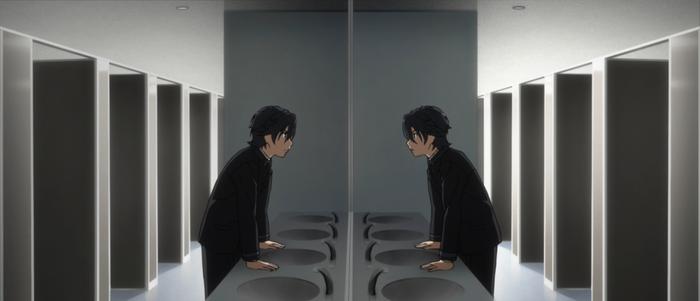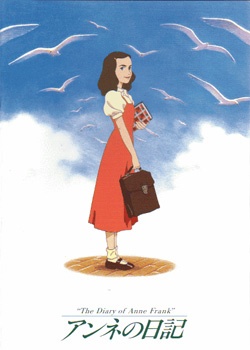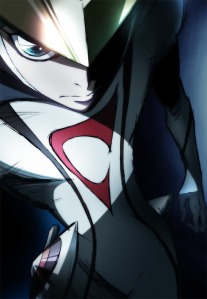Is it ethical to clone a human being? Would anything—or anyone—have to be sacrificed? How far should one go to save a life? A.I.C.O. Incarnation asks these questions in the aftermath of a biological experiment gone horribly wrong.
The year is 2035. A team of scientists inadvertently create a massive and lethal organism that has infested a region of Japan. To gain a better understanding of this “Matter”, as it’s called, special-op “diver” teams are sent into quarantined areas, usually at the behest of a secretive client, to investigate and retrieve samples.

The main characters are 15-year old Aiko Tachibana, a charming high school student, and Yuya Kanzaki, a diver with a mysterious past. Yuya, who looks slightly older than Aiko, has a laser-like focus on what he feels must be done to remedy the current situation. His aloofness and knowledge often arouse suspicion from those around him. Conversely, Aiko’s life hasn’t been as mission oriented. Still recovering from the events that took the lives of her parents and younger brother, she’s bound to a wheelchair as she’s rehabilitated at a hospital near her school. In the face of these tragedies, Aiko has maintained her humanity.

One of the several notable supporting characters in this world is Dr. Kyōsuke Isazu, voiced by the legendary Takehito Koyasu of JoJo’s Bizarre Adventure fame; he played Dio in the 2012 adaptation. Dr. Isazu is the head of the hospital that oversees Aiko’s rehabilitation. His own daughter, Yuzuha, is in a coma. Finding a cure for her is always in the back of his mind.
A revelation sets Aiko and Yuya on a dangerous mission deep into the Matter. They’re accompanied by a team of divers: scientist Haruka Seri; rambunctious and agile Kaede Misawa; electrician Kazuki Minase; stern ex-military fighter Yoshihiko Sagami; mechanic Maho Shiraishi; and their leader Daisuke Shinoyama. Personally, I really liked Maho. She was an anchor for the team, and instrumental in helping Aiko adapt to her new role. My least favorite was Kazuki. He wasn’t unbearably annoying, but his interest in Aiko added extra tension to an already tense situation.

Exchanges between the characters were often steeped in jargon. I’m not a scientist, so I can’t verify the accuracy of all the exposition. Regardless, I chose not to worry too much about it. Scientific accuracy only truly matters in real life. In a story, it doesn’t hurt to take some liberties—as long as they aren’t too obvious or distracting—to enhance the intrigue. Would it be possible, with technology 20-years from now, to create a rampant biomass that’s impervious to most forms of attack? Who knows. But is it cool to see one in an anime? Hell yeah!
Visually, the diver suits were an immediate standout. Instead of taking the easier route with 3D graphics, the suits were hand drawn with a real sense of weight that you felt as they zipped through the hallways in the opening scene. And when there was 3D, the shading and frame rate closely matched the 2D. The creators didn’t overlook the small details, and were sticklers about consistency—even if it caused some “panchira.” Such shots, however, avoided excess, and were always the natural consequence of physics, which, for me, is preferred over “magic skirts” that unnaturally defy gravity and shape shift. In short, the animation makes few compromises. Everything looks great, and moves as you’d expect it to. Netflix must’ve given BONES/Project A.I.C.O. a generous budget.

I briefly listened to the English dub track to hear how it sounded. Unfortunately, but perhaps unsurprisingly, the male actors were uninspiring, and the female actors sounded like adult women trying to imitate the tone of young girls. If you struggle with keeping up with info dumps, which are abundant in this show, I’d recommend the dub. Otherwise, in my humble opinion, in this case, the sub is better.
A.I.C.O. reminded me of the live-action movie Annihilation (2018). It raised stimulating ideas as it took us through menacing environments populated by peculiar forms. The director, Kazuya Murata (Gargantia on the Verdurous Planet), did well in bringing so many pieces—maybe too many—together into an engaging story with an impactful ending. Some people will surely disagree about the ending, preferring something happier, or something more tragic, but I felt that an appropriate and satisfying balance was found. The story wasn’t necessarily groundbreaking, and it was occasionally difficult to follow, but it certainly wasn’t dull, and, at times, it was quite brilliant.







 On June 12th, 1929, about ten-years before the start of World War II, Annelies Marie Frank was born to parents Otto and Edith Frank in Frankfurt, Germany. Rendered stateless by the Nazis in 1941, and without any means to flee the country, Anne and her family were forced into confinement for two-years in a cramped attic to avoid persecution. While staying there, Anne documented her life in a now famous diary, which has since been adapted into movies, plays, and even an anime.
On June 12th, 1929, about ten-years before the start of World War II, Annelies Marie Frank was born to parents Otto and Edith Frank in Frankfurt, Germany. Rendered stateless by the Nazis in 1941, and without any means to flee the country, Anne and her family were forced into confinement for two-years in a cramped attic to avoid persecution. While staying there, Anne documented her life in a now famous diary, which has since been adapted into movies, plays, and even an anime.